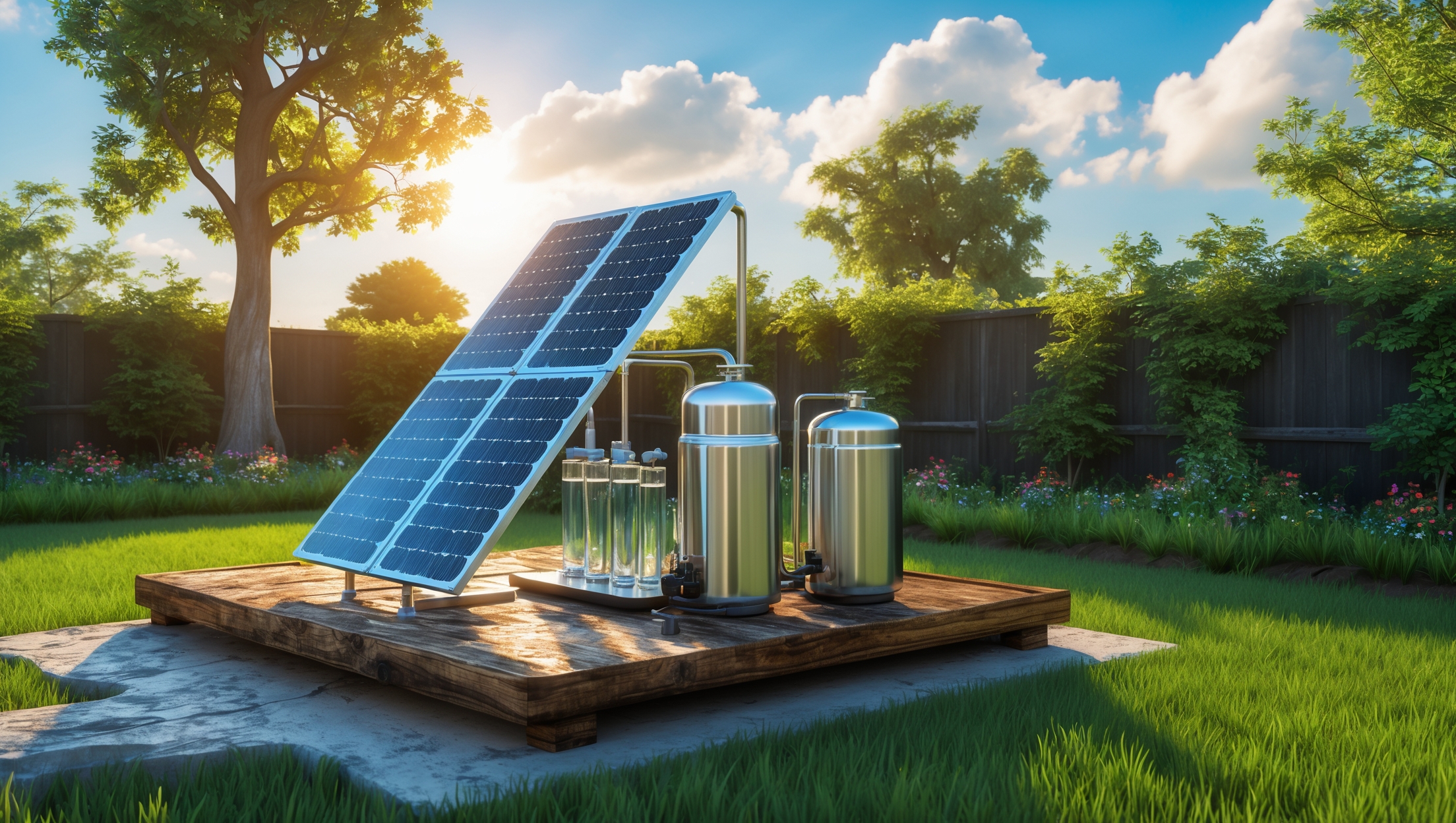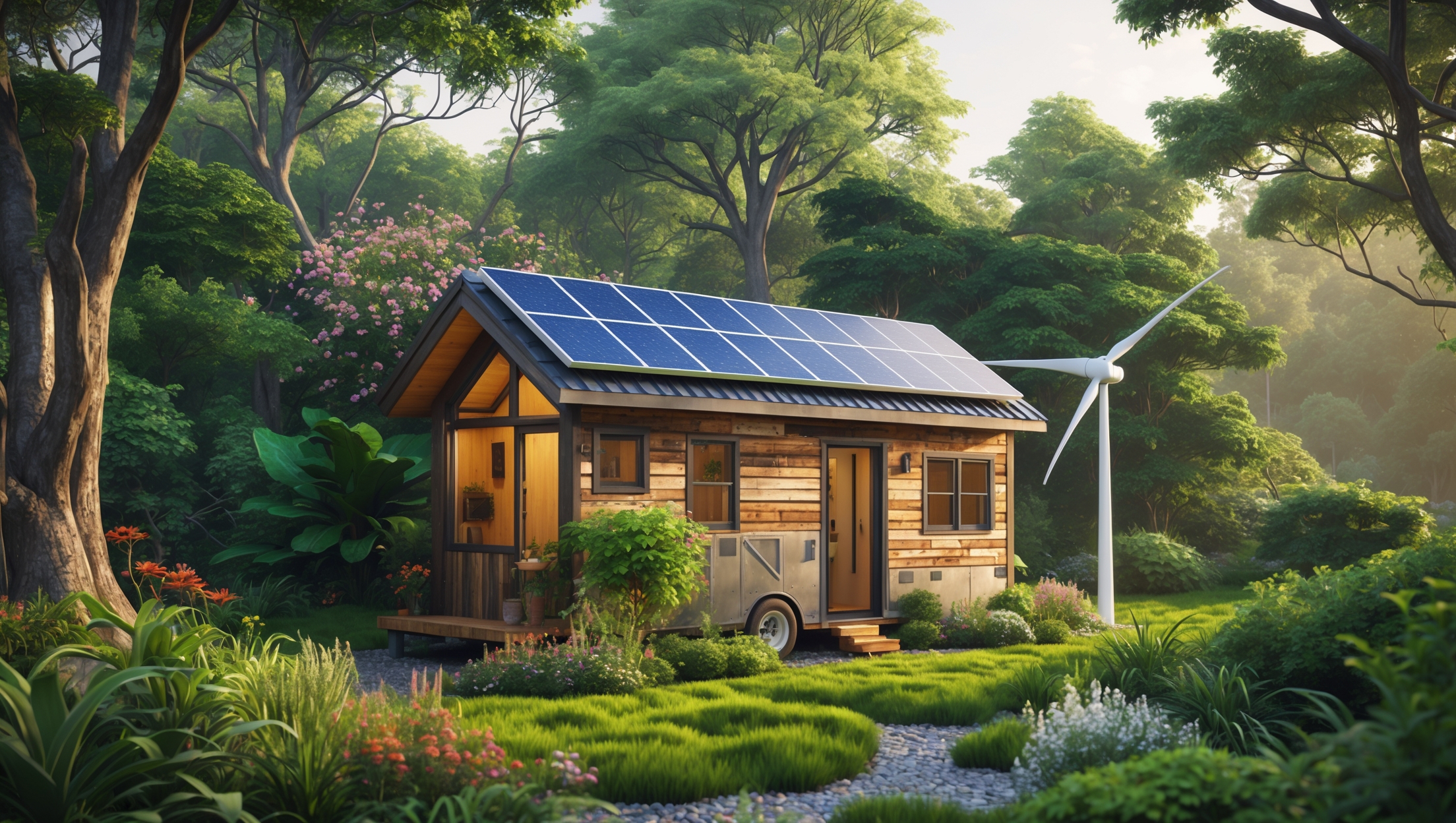Introduction: Clearing the Air on Solar Water Purification Myths
Access to clean water is a fundamental need, and sustainable living enthusiasts are increasingly turning to solar-powered water purification systems for home use. Yet, despite the growth of green technologies, a fog of misconceptions surrounds home-scale solar water purification. Too often, homeowners are discouraged by persistent myths—ranging from doubts about efficacy and safety to exaggerated costs and maintenance burdens. These myths not only cloud judgment but may prevent individuals and families from embracing a reliable, eco-friendly solution that could contribute to household resilience and global water sustainability.
This article sets out to debunk the most common myths about home solar water purification systems. If you’re considering harnessing the sun’s power to purify your household water supply—or simply curious about how these systems work—you’ll find evidence-based answers, practical insights, and clear explanations ahead. We’ll address myths about water quality, technology limitations, affordability, installation complexity, and ongoing care, giving you the confidence to make informed choices about sustainable water solutions for your home.
How Home Solar Water Purification Works
Solar Distillation: Harnessing the Sun’s Energy
Solar water purification systems use the sun’s energy to remove contaminants from water. The most common method is solar distillation, where sunlight heats water in a sealed chamber. As the water evaporates, it leaves impurities behind. The vapor then condenses on a cool surface, such as a glass or metal cover, and is collected as clean, distilled water. This process effectively removes salts, heavy metals, bacteria, viruses, and most organic contaminants.
Photovoltaic-Powered Filtration
Some systems use photovoltaic (PV) panels to generate electricity, powering pumps and advanced filtration units. These setups can combine mechanical filtration (removing sediments), activated carbon filters (removing chemicals and odors), and ultraviolet (UV) disinfection (neutralizing pathogens). PV-powered systems are especially useful in climates with variable sunlight or where higher flow rates are needed.
Passive vs. Active Systems
- Passive solar stills: Simple, low-maintenance, best for small daily water needs.
- Active PV-powered systems: Higher capacity, can integrate with existing plumbing, more flexible but involve higher upfront cost and complexity.
Myth #1: Solar Water Purification Doesn’t Remove Harmful Contaminants
The Reality
This is a widespread misconception. Solar distillation removes a wide spectrum of contaminants, including bacteria, viruses, protozoa, salts, and heavy metals. The process is similar to the natural water cycle—evaporation leaves pollutants behind, and only pure water vapor condenses. Numerous studies confirm that solar stills can produce water that meets World Health Organization (WHO) drinking standards, provided the system is properly maintained and used with suitable source water.
What Solar Distillation Does Not Remove
While highly effective, solar distillation may not remove some volatile organic compounds (VOCs) and chemicals with boiling points close to or below that of water. However, these are rare in most household water sources. For added safety, combining solar stills with activated carbon filters can address this limitation.
Myth #2: Solar Water Purification Is Too Slow for Household Needs
The Reality
Critics often claim solar water purification can’t meet daily household water demands due to slow production rates. While it’s true that a single small solar still may only produce 1–5 liters per day, modern designs and modular systems can scale output. For example, a family of four needs approximately 8–12 liters per day for drinking and cooking. By installing multiple stills or using larger, more efficient designs, you can reliably meet or exceed this requirement. PV-powered filtration systems can provide even higher flow rates, suitable for larger households or continuous supply needs.
Tips for Maximizing Output
- Install multiple solar stills in parallel to scale up production.
- Use reflective materials to concentrate sunlight and boost evaporation rates.
- Pre-filter source water to minimize fouling and maintain high efficiency.
Myth #3: Solar Water Purification Only Works in Hot, Sunny Climates
The Reality
While solar water purification is most efficient under strong sunlight, it can still function in cooler or cloudier environments. Well-designed stills and PV systems can operate on diffuse sunlight, though with reduced output. Some advanced systems use vacuum insulation or thermal storage to extend daily operation. Additionally, PV-powered filtration units can store solar energy in batteries, ensuring purification continues during cloudy periods or at night.
Climate Adaptation Strategies
- Opt for double-glazed or insulated solar stills to minimize heat loss.
- Use battery-backed PV systems to provide consistent filtration regardless of sunlight variability.
- Consider hybrid systems that can switch to grid power during prolonged overcast periods.
Myth #4: Solar Water Purification Systems Are Expensive and Not Cost-Effective
The Reality
There’s a misconception that green technologies always come with a hefty price tag, but home-scale solar water purification is often less expensive than expected. Simple solar stills can be built DIY for as little as $30–$100, using basic materials like glass, black trays, and sealant. Commercially available units range from $200 to $1,500 depending on capacity and features. PV-powered filtration systems have higher upfront costs ($500–$3,000), but their long-term operating expenses are minimal—there are no ongoing fuel or electricity costs, and maintenance is straightforward.
Comparative Cost Breakdown
- DIY solar still: $30–$100 (materials), negligible operating cost.
- Commercial solar still: $200–$1,500 (one-time cost), low maintenance.
- PV-powered filtration: $500–$3,000 (setup), minor periodic filter replacements.
- Annual savings: Eliminates bottled water purchases, reduces utility bills for off-grid applications.
Myth #5: Installation Is Complicated and Requires Professional Help
The Reality
Many homeowners are intimidated by the idea of installing solar water purification systems, but most designs are DIY-friendly. Basic solar stills require only simple assembly, clear instructions, and some weatherproofing. Even PV-powered kits are increasingly modular, with plug-and-play components and detailed guides. For those who prefer not to DIY, local solar installers or green technology contractors can provide affordable setup services. Permits are rarely required for passive solar stills, though it’s wise to consult local codes for PV-powered systems integrated with household plumbing.
Essential Installation Tips
- Choose a sunny, south-facing location with minimal shading.
- Ensure glass or polycarbonate covers are well-sealed to prevent heat loss.
- For PV systems, install panels at the optimal tilt angle for your latitude.
- Use food-grade materials for all water contact surfaces.
Myth #6: Maintenance Is a Major Hassle
The Reality
Another common myth is that solar water purification systems are high-maintenance. In reality, passive solar stills require minimal care—primarily periodic cleaning of glass covers, trays, and collection bottles to prevent scale buildup and algae growth. PV-powered systems may require occasional filter changes and an annual check of electrical components. With proper setup and routine inspections, systems can operate reliably for years with little intervention.
Simple Maintenance Checklist
- Clean glass covers and trays monthly to maximize sunlight penetration and prevent scaling.
- Replace activated carbon or UV filters in PV-powered units as specified by the manufacturer (typically every 6–12 months).
- Inspect seals and gaskets for leaks or wear annually.
- Flush any sediment traps or pre-filters when flow rates decline.
Myth #7: Solar Water Purification Produces Poor-Tasting Water
The Reality
Some believe that water purified by solar distillation tastes flat or unpleasant. While distilled water does lack minerals found in tap or spring water, it is pure and safe for drinking and cooking. To improve taste, you can remineralize water by adding a pinch of sea salt, using mineral cartridges, or blending with a small volume of filtered tap water. PV-powered filtration systems retain beneficial minerals while removing contaminants, often resulting in water that tastes as good or better than commercial bottled water.
Myth #8: Solar Water Purification Isn’t Safe for Long-Term Use
The Reality
Solar distillation and PV-powered filtration are recognized by health authorities as safe methods for producing potable water. Long-term use poses no health risks as long as the system is properly maintained, and water is stored in clean, food-grade containers. It’s important to monitor for any signs of contamination (such as biofilm growth or unusual odors), but with basic care, these systems are perfectly safe for daily use over years.
Myth #9: Solar Water Purification Can’t Be Used for Emergency Preparedness
The Reality
On the contrary, solar water purification systems are excellent for emergency preparedness. They operate independently of grid electricity and municipal supplies, making them invaluable during power outages, natural disasters, or supply interruptions. Compact, portable solar stills can be deployed in disaster kits, while larger home systems provide resilience against droughts or utility disruptions. Just ensure you have adequate collection containers and pre-filter sediment-laden water for best results.
Choosing the Right Solar Water Purification System for Your Home
Assess Your Needs
- How much purified water does your household require daily?
- What are the typical contaminants in your water source?
- Do you want a passive (low-maintenance) or active (higher capacity) system?
- What’s your available budget and installation space?
Compare System Types
- Solar stills: Best for small-scale, off-grid, or backup use. Ideal in sunny climates.
- PV-powered filtration: Higher flow, continuous supply, integrates with household plumbing, effective in variable climates.
Key Features to Look For
- Food-grade, non-corrosive materials.
- Ease of assembly and maintenance.
- Certified filtration components (NSF/ANSI or equivalent).
- Expandability and modularity.
- Good manufacturer support and user reviews.
Conclusion: Embracing Solar Water Purification for a Sustainable Future
Solar water purification systems—whether simple stills or advanced PV-powered filters—offer a proven, sustainable solution to the challenge of household water quality. By dispelling the myths that surround these technologies, we see that they can deliver reliable, safe, and affordable purified water in a range of climates and settings. Fear of slow output, high cost, complex installation, or poor water quality is largely unfounded, rooted in outdated information or confusion with obsolete designs. Modern systems are accessible to DIYers and homeowners alike, and maintenance is straightforward with the right setup.
For families striving to live more sustainably, solar water purification is a powerful tool—reducing reliance on bottled water, cutting utility costs, and providing peace of mind during emergencies. As water scarcity and climate challenges mount, adopting solar-powered purification is not just an eco-friendly gesture but a practical investment in household resilience. With clear-eyed information and a little planning, anyone can enjoy the benefits of pure, sun-powered water at home. Don’t let myths stand between you and a greener, safer future.





If I wanted to switch my household to a solar water purification setup, are there best practices or certification standards I should look for to make sure it’s truly effective and safe?
When choosing a solar water purification system, look for products that meet established certification standards such as NSF/ANSI or WHO guidelines for water safety. It’s important that the system is rated for the types of contaminants found in your water source. Also, make sure to have your water tested before and after installation to verify the system’s effectiveness. Regular maintenance and following the manufacturer’s recommendations will help ensure safe, clean water long-term.
Can you clarify whether solar distillation systems can handle well water with high mineral content, or would I need to combine them with other filtration methods to remove all potential contaminants?
Solar distillation systems are effective at removing many dissolved minerals, making them well-suited for purifying well water with high mineral content. However, if your well water contains contaminants like heavy metals, pesticides, or certain volatile chemicals, you may need additional filtration systems to ensure complete removal of all potential hazards. It’s a good idea to test your water first, then decide on any extra treatment steps.